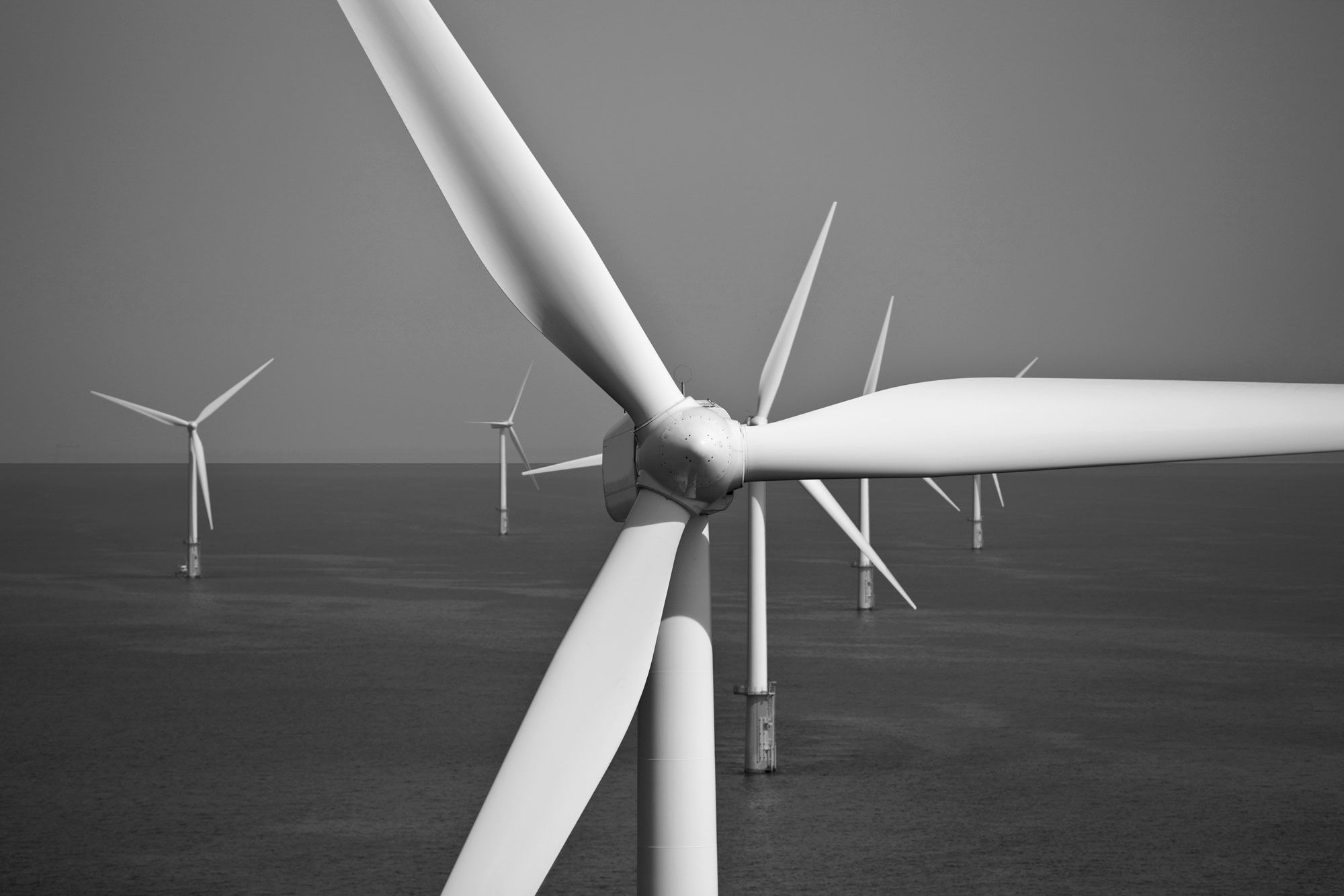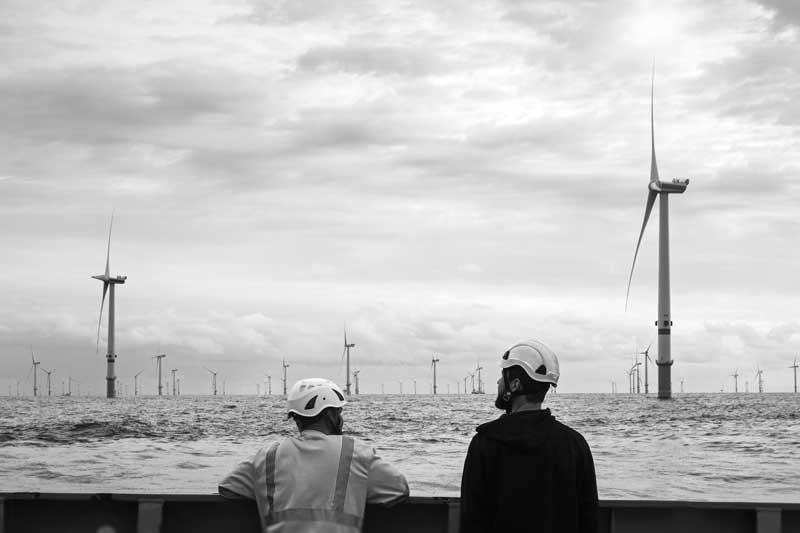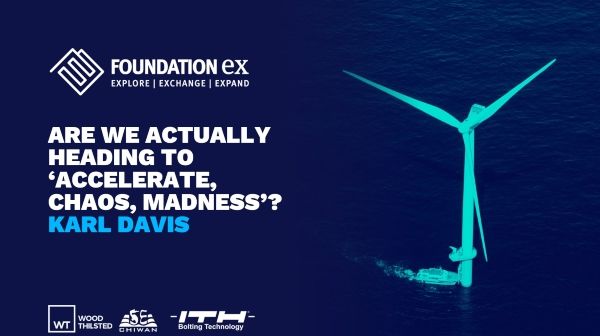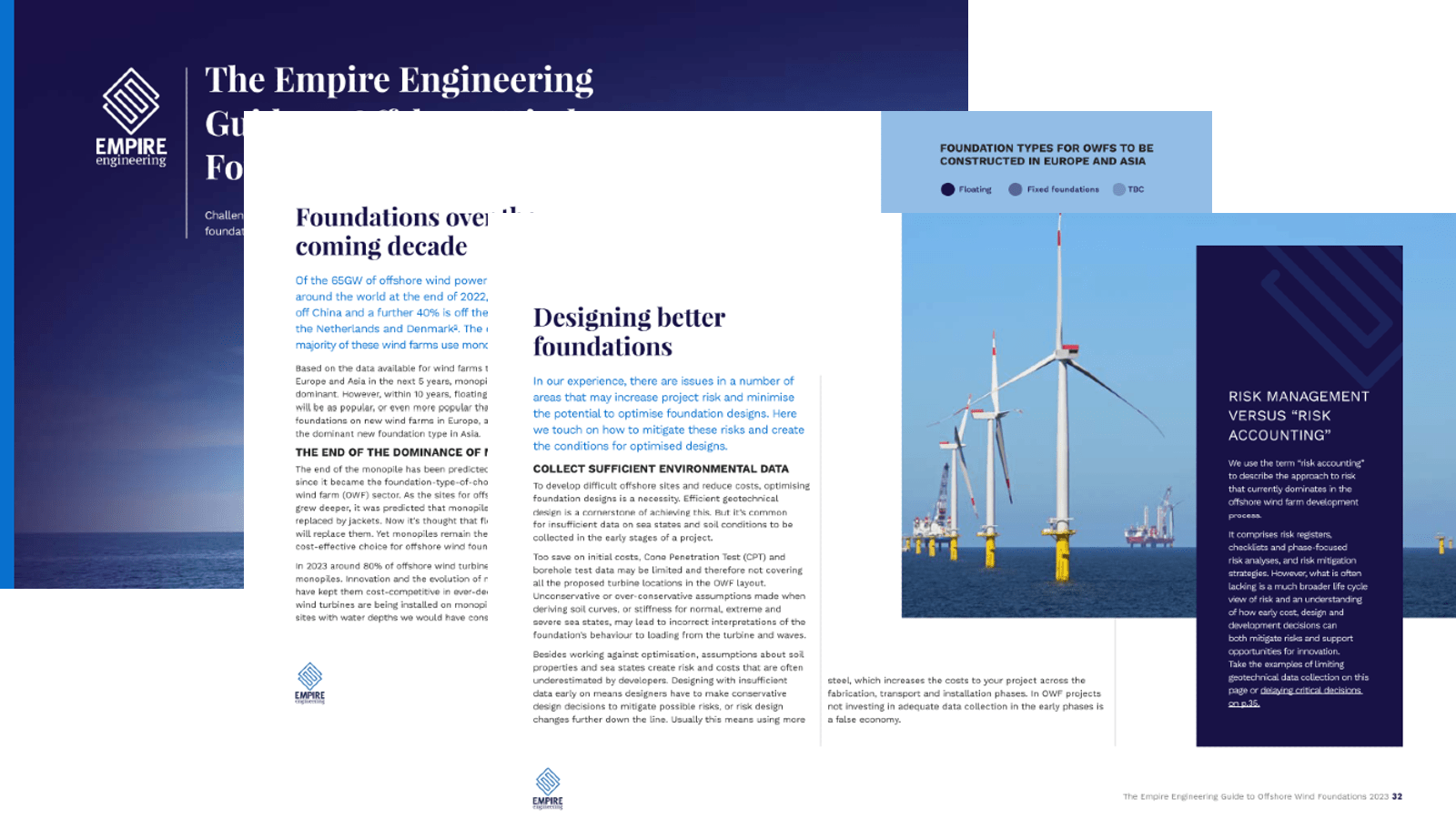From Foundation Ex
This article is composed from Karl Davis’ opening address
at the 2022 Foundation Ex conference.
The theme of this year’s Foundation Ex was Scale, Optimise, Deliver. The idea being that over the past 2 decades we’ve worked out how to reliably develop offshore wind farms, and now it’s time for scaling up in offshore wind, optimising design and deliver them.
In my opening speech I wanted to address what the future holds and look critically at the challenges in our way. If you want to find out more about the event, read my blog.
In preparing for scale up, we have started to see offshore wind targets increase rapidly. During the COVID pandemic we saw a real change in public perception towards climate change and the need for renewable energy.
Combined with the recent sad events in Ukraine and concerns about energy security we have seen a marked Sea-Change in the appetite for offshore wind.
This all raises the question of whether we’re actually heading for “Accelerate, Chaos, Madness”, rather than the preferred “Scale, Optimise, Deliver”.
To give this some context, let’s look at the figures.
Targets and Capacity
The EU Offshore Renewable Energy Strategy sets out the goals of reaching 60 GW of offshore wind capacity by 2030 and 300 GW by 2050, against today’s installed capacity of about 28GW. So that’s 4GW/year until the end of the decade, and then 12GW/year from 2030-2050. More recently, Boris Johnson has talked about the UK targeting 50GW of offshore wind by 2030.
This whilst we only have about 10GW today, requiring 5GW/year until the end of the decade. So Boris is setting targets for the UK higher than that of Europe, which seems ambitious at best.
In my view, if we try to reach these targets using the existing approaches, we’ll never get there. The supply chain capacity in things like WTG’s, vessels, cables, fabrication slots and skilled people don’t exist to deliver. We’re running headlong into Accelerate, Chaos and Madness right now, and we need to make changes to address this.
The UK seabed leasing rounds have been largely priced based competitions since their inception. This was an effective mechanism at motivating technology cost reduction and has led to offshore wind now being a cost competitive energy source.
But now I feel the motivation needs to change. Whilst price will always remain a factor, the key drivers today need to be guaranteeing capacity and timeline for assets coming online. We need to start moving away from pure competition models and start talking about collaboration.

Supply Chains
To date the offshore wind industry hasn’t been terribly kind to its supply chain. Projects drawing out tendering processes over multiple years, and suppliers being burnt has been commonplace. Now that we want to massively scale, and quickly, the supply chain will need to be provided with a lot more confidence if they are to scale as needed.
At present we can see the supply chain growing, but probably at about half the rate it needs to – and who can blame them, better to grow a bit and be busy than grow too much and not have enough work. If you want people to commit to these goals, you need to make sure they believe in them.
This is where I think we need more collaboration from developers. In my view the next Joint Industry Projects should be focusing on giving clarity to the supply chain and providing them the confidence to grow. Providing industry guidance on the big picture of number and size of wind farms being installed each year for the next 5, 10, 20 years requires a degree of crystal ball gazing, but it has far more value and credibility coming from a broad group of developers, than basically anyone else.
Similarly providing industry guidance on more technical details seems an essential and highly valuable exercise. A joint industry projection on the development of monopile and TP lengths, weights and diameters for the next 5, 10, 20 years would similarly help guide the supply chain on how to plan growth.
While we’re at it, maybe we could try and standardise Transition Piece design beyond just the Boat Landing? But this all relies on a much-needed drive towards collaboration.
I think the real crux in terms of supply chain is in fact in experienced and skilled people. Currently we’re seeing a real spike in demand for people, and there’s lots of movement between companies, but it’s basically just swapping resources. Now whilst there is probably some value to all of us in swapping around resources and broadening experience, in reality it’s not growing the industry. In order to really grow, we need new blood, we need lots of it, and we need to train these new people. At present we see a token effort here…

The Right Skills in the Right Place
We’re pleased to continue welcoming people from the Oil and Gas and other sectors, but there is a heavy tendency to rely on transferable skills, and limited effort being made to train and accelerate that transition.
We should also be seeing a much greater drive to pull fresh graduates into offshore wind, and I don’t see this happening at pace yet. Here at Empire Engineering we are making strides to recruit new talent into the offshore wind sector, read more about it here.
My view is the industry needs some joined up thinking here, work out what it needs, and collectively plan how to make it happen.
Talk with a specialist
We've been a part of some of the worlds most exciting and
complicated projects in offshore wind.
If you need more eyes, brains and hands, we're ready to help.
Empire specialists can effectively and efficiently assist with your offshore wind project. To find out more, please get in touch with the team at Empire Engineering.


